Title: Encouraging Movement: How to Help Baby Roll from Belly to Back
As your little one embarks on the exciting journey of development, every tiny milestone is steeped in wonder and discovery. One such achievement—rolling over—marks a significant step in their physical growth and exploration of the world. From the moment they first experience the thrill of flipping from belly to back, your baby begins to cultivate essential skills that lay the groundwork for future movement and coordination. However, this adorable transition doesn’t always happen instinctively. Luckily, there are gentle and engaging ways to encourage your baby on this path. In this article, we will delve into practical tips, playful techniques, and the importance of fostering a safe and stimulating environment that not only promotes rolling but also nurtures your baby’s natural curiosity. Let’s embark on this delightful journey of movement together!
Understanding the Developmental Milestones of Rolling
Rolling is a significant milestone in your baby’s journey towards mobility. Generally, infants begin to exhibit this skill around four to six months of age. As they roll from their belly to their back and vice versa, they are not just showcasing physical development but also enhancing their cognitive abilities through spatial awareness and coordination. **Key factors** influencing this milestone include:
- **Muscle Strength**: Adequate strength in the neck, back, and core is crucial.
- **Tummy Time**: Regular practice helps babies build the necessary muscles for rolling.
- **Motivation**: Toys placed just out of reach can encourage rolling.
To monitor their progress, parents can refer to the following snapshot of rolling development:
| Age Range | Rolling Development |
|---|---|
| 4-6 Months | Initial attempts, often from tummy to back. |
| 6-8 Months | More controlled rolling in both directions. |
| 9 Months | Rolling becomes a preferred method of movement. |
Creating a Safe and Engaging Play Environment
Creating a nurturing space for your little one to explore is crucial in encouraging movement, especially as they transition from belly to back. Start by ensuring the area is free from any hazards. Use **soft mats** or blankets to create a comfortable surface. Surround your baby with **colorful toys** that entice their curiosity. This creates not just a physical barrier but also a visual stimulation that promotes reaching and rolling. Here are some essentials for a vibrant play environment:
- Non-slip mats: Provide stability and comfort.
- Varied textures: Incorporate toys and fabrics that differ in feel.
- Safe spacing: Ensure there’s enough room for movement without risks.
Additionally, keep the environment interactive by frequently joining your little one during playtime. Your presence encourages exploration and bonding. Position yourself at their eye level and use enticing sounds or gestures to attract their attention. Here’s a quick overview of how your involvement can boost their confidence:
| Activity | Benefit |
|---|---|
| Engaging with toys | Promotes reaching and grasping skills. |
| Mirror play | Encourages self-awareness and movement imitation. |
| Exaggerated movements | Inspires mimicry and exploration. |
Techniques to Encourage Tummy Time and Movement
Introducing your baby to tummy time is a delightful journey that not only boosts their physical strength but also enhances their cognitive development. To foster a positive tummy time experience, consider creating an engaging environment filled with **soft textures** and **vibrant colors**. Here are some strategies to help stimulate their senses:
- Interactive Play Mats: Use play mats with different designs and textures to pique your baby’s curiosity.
- Mirrors: Position a baby-safe mirror in front of them to encourage them to lift their head and explore their reflection.
- Favorite Toys: Place their favorite toys just out of reach to motivate them to reach for them during tummy time.
- Face-to-Face Engagement: Get down on the floor with your baby, making eye contact and encouraging interaction through singing and talking.
To further enhance mobility, integrate gentle movements into your daily routine. Start by encouraging your little one to roll over by creating a safe space that allows ample room for exploration. You might find these activities particularly helpful:
- Side-Lying Play: Encourage your baby to play on their side, which can naturally lead them to rock and eventually roll over.
- Reaching Games: Encourage reaching for toys to strengthen core muscles and encourage rolling.
- Rolling Demonstrations: Show them how to roll by gently demonstrating the movement with a toy or your own body.
Interactive Games and Activities to Foster Rolling Skills
Engaging your little one in interactive games can be an enjoyable way to encourage them to develop their rolling skills. Consider using the following activities to create an enriching environment that promotes movement:
- Mirror Play: Position a baby-safe mirror in front of your child. As they reach for their reflection, the curiosity will motivate them to roll over.
- Toy Trails: Place toys just out of reach on their side. The desire to grab their favorite toy will encourage them to roll from belly to back.
- Rolling Races: Lie down next to your baby and take turns rolling gently. Your enthusiastic demonstrations can inspire them to mimic your movements.
In addition to these activities, incorporating colorful mats or blankets can enhance the experience. A soft and textured surface can create a stimulating play area that invites exploration. You can create a simple layout like the one below to inspire creativity:
| Activity | Materials Needed |
|---|---|
| Mirror Play | Baby-safe mirror |
| Toy Trails | Assorted toys |
| Rolling Races | Parent participation |
Q&A
Q&A: How to Help Baby Roll Belly to Back – Encouraging Movement
Q1: Why is rolling from belly to back an important milestone for my baby?
A: Rolling is a fundamental development milestone that signifies your baby is gaining strength and coordination. It helps enhance their motor skills, promotes muscle development, and encourages spatial awareness. Plus, it’s the beginning of an exciting journey towards more complex movements like crawling and walking!
Q2: At what age should I expect my baby to begin rolling from belly to back?
A: Most babies start to roll over between 4 to 6 months of age. However, each child develops at their own pace. Some may achieve this milestone a bit earlier, while others might take a little longer. Keep an eye on their interest in movement, as this can be a sign that they are ready to practice rolling.
Q3: What are some effective ways to encourage my baby to roll from belly to back?
A: You can promote this movement through play! Try the following methods:
- Tummy Time: Ensure your baby gets plenty of tummy time while they’re awake. This strengthens the neck, shoulder, and back muscles needed for rolling.
- Motivation Through Toys: Place their favorite toy just out of reach when they’re on their tummy. The desire to reach for it can encourage a roll!
- Gentle Assistance: Help your baby practice rolling by gently guiding them over while they’re on their belly. Always ensure they’re safe and comfortable.
- Engaging Play: Sing songs or make sounds from different angles to capture their attention, encouraging them to turn towards you.
Q4: What positions should I avoid when helping my baby learn to roll?
A: Always ensure you’re providing a safe environment. Avoid placing them on excessively soft surfaces, as this can hinder their ability to roll. Steer clear of props or cushions that might create an obstacle for rolling. Instead, opt for flat, firm areas, like a mat or a clean floor.
Q5: My baby seems frustrated when trying to roll. What should I do?
A: Frustration can be a normal part of the learning process. Make sure to keep the mood light and playful. Provide plenty of encouragement and don’t rush them. If they seem overwhelmed, take a break and try again later. Remember, this journey is about progress, not perfection!
Q6: How often should I practice rolling with my baby?
A: Integrating rolling practice into your daily routine can be beneficial. Aim for short, fun sessions of 5-10 minutes during tummy time. Make it a playful experience—frequent, enjoyable practice is more effective than long sessions that might tire them out.
Q7: When should I consult a pediatrician if my baby is not rolling?
A: Every baby develops at their own pace, but if your baby is significantly older than 6 months and still hasn’t shown any interest in rolling, it might be worth discussing with your pediatrician. They can provide guidance, reassure you, and assess if further evaluation is needed.
Q8: Are there any developmental signs I should look out for in addition to rolling?
A: Yes, while rolling is key, also look for signs such as reaching for toys, lifting the head while on their belly, and showing interest in moving to different positions. These skills are all interconnected and help indicate overall motor development.
By supporting your baby in their rolling journey, you’re nurturing their growth and development while ensuring some fun time together. Enjoy the process—the little victories are what make parenting such a joyful adventure!
To Wrap It Up
As we wrap up our exploration of how to help your little one transition from belly to back, it’s clear that this journey is as much about connection as it is about skill development. Each gentle encouragement, playful interaction, and moment of patience contributes to your baby’s growing body awareness and confidence. Remember, milestones vary from child to child, and every small victory deserves celebration.
So, embrace the giggles, the wobbles, and the triumphs—each roll is a step towards greater mobility and independence. As you guide your baby through these formative movements, you’re not just fostering physical skills; you’re cultivating a bond brimming with love and trust. Keep the playfulness alive, and soon you’ll find that your little explorer is not just rolling over, but rolling into new adventures just waiting to unfold. Happy rolling!


